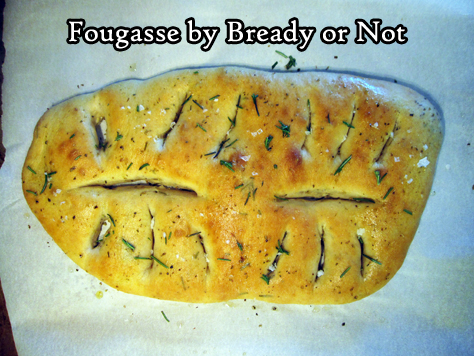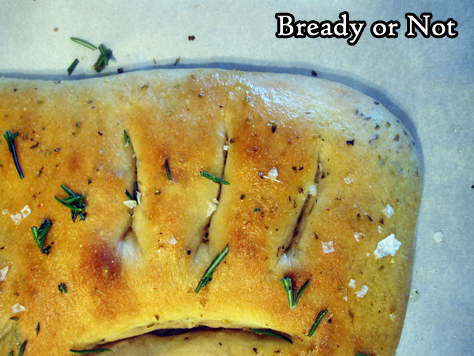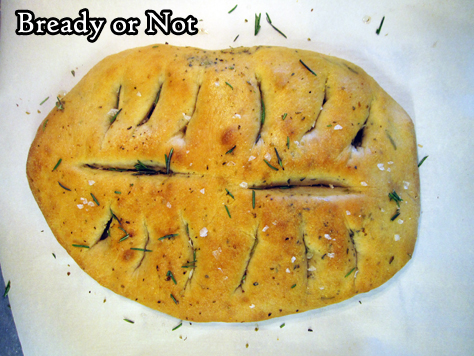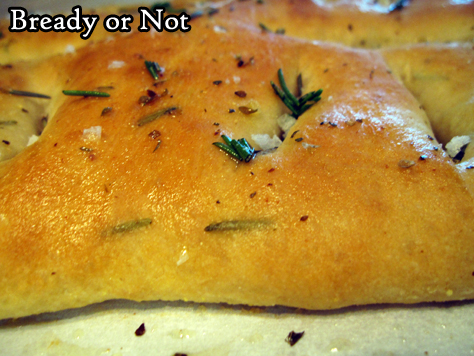Bready or Not goes full-on bready with this week’s feature: Fougasse, a French style of bread fragrant with herbs and formed into two leaf-shaped loaves.
I first encountered this bread on the Great British Bake Off, where it was presented as a technical challenge with minimal instructions. (I highly recommend watching season 4 episode 6 prior to baking, if you can, as it provides great tips and visuals of the bread).
I found this bread dough surprisingly easy to work with. I opted to make it in my Kitchen Aid, which is in line with the original recipe, but it could certainly be mixed in a bread machine or by hand.
The end result reminded me of focaccia with the herby, salty flavor, but I found the leaf shape of the fougasse to be incredibly fun. It really makes for a great presentation.
To use Bake Off terminology, this bread is a technical challenge that also works as a showstopper.
Modified from Paul Hollywood’s recipe as published on the BBC’s site.
Bready or Not: Fougasse
Equipment
- 2 large baking sheets
- parchment paper
- pizza cutter
- pastry brush
Ingredients
- 2 Tablespoons olive oil plus more for greasing and drizzling
- 500 grams bread flour plus more for dusting (1 lb, 2 ounces)
- 10 grams fine sea salt (1/4 teaspoon)
- 7 grams instant yeast (2 1/4 teaspoon)
- 350 ml warm water (12 ounces)
- 4 teaspoons chopped rosemary plus more to finish
- 2 teaspoons dried Italian seasoning
- fine cornmeal for dusting, or substitute semolina flour
- 1/2 teaspoon dried oregano
- sea salt flakes to finish
Instructions
- Grease a large container with some olive oil. Line two large baking sheets with parchment paper.
- In a mixer with a dough hook (or with a dough whisk and arm muscle), combine the bread flour and sea salt. Add yeast, followed by the measured olive oil and most of the warm water. Mix on low speed. As the dough comes together, slowly add the rest of the water. Continue to mix on medium speed for about 7 or 8 minutes. Add the herbs and make sure they are evenly distributed. Dough should be quite elastic and easy to work with.
- Dump the dough into the oiled container. Cover with plastic wrap and let rise until at least doubled, about an hour. Dough should be bouncy and shiny.
- Dust a work surface with extra flour and cornmeal (or semolina). Tip the dough onto the surface. It should be loose and flowing. Divide dough in half.
- Place each piece of dough on the prepared parchment. Spread into a flat oval, then use a pizza cutter to slice twice down the middle (to make a stem) with six cuts on the side of each leaf (see photograph for example). Gently stretch out the dough to emphasize the holes.
- Cover both loaves with plastic wrap and allow to set for 20 minutes as the oven preheats to 430-degrees.
- Brush or spray additional olive oil atop each leaf, then sprinkle on the dried oregano.
- Bake for about 7 minutes, then switch positions of bread on the oven racks. Continue baking another 8 minutes or so (15 to 20 minutes total) until each fougasse is golden and sounds hollow when tapped on the bottom. Remove from oven. Immediately brush more olive oil on top, followed by a sprinkling of sea salt.
- Bread is delicious fresh or at room temperature. Loaves can be well-wrapped and frozen for later enjoyment.










